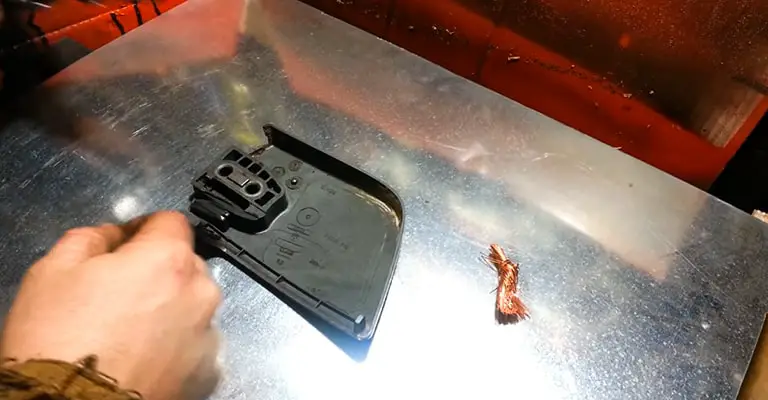I love creating free content full of tips for my readers, you. I don't accept paid sponsorships, my opinion is my own, but if you find my recommendations helpful and you end up buying something you like through one of my links, I could earn a commission at no extra cost to you. Learn more
Plastic’s malleability supersedes many. That’s where that innate property of plastic products find their source from. But another downfall of plastic products is that they tend to crack and break quickly. If one of your favorite plastic items breaks down having a crack on its body you can either throw it away for a new one or try to repair the broken part.
If you go for the second option, then the best approach you can take would be to use a soldering iron and weld the plastic material. The repair and joint you will get from this will be stronger and last longer than any glue-based plastic adhesive. We will teach you the proper and effective way of welding plastic with soldering iron.

In this post we'll cover:
Preparation Phase | Clean the Plastic
Let’s assume that there is a crack in a plastic object and you want to join those separated pieces together. So the first thing you need to do is clean that area. An unclean surface of plastic will result in a bad weld and ultimately a bad joint. Firstly, clean the spot with a dry piece of cloth. If there are sticky substances you can try wetting that cloth afterward and then scrub the spot. Although it is not necessary most of the time, using alcohol to clean the spot will produce the best result in terms of cleaning. Wait for the area to dry properly after you clean it. Then be ready with the tools i.e. soldering station, soldering wire etc.
Precautions
Welding with a soldering iron involves high temperature around 250degree Celsius, and hot molten substances. If you’re not careful enough, you may get heavily injured. Make sure that once you melt the plastic, it doesn’t drop on your body or anything valuable. If this is your first time with a soldering iron, ask an expert to stand by you. Before your first weld, we recommend you play with scrap plastics and get a good grip on the process. This will give you an idea of how long you need to press onto the plastic. Also, try different settings of temperature, if your soldering iron allows it, on the scrap plastic to find the best temperature for welding. Then clean the soldering iron properly so that your soldering will be efficient and effective.
Welding Plastic with a Soldering Iron
Before using the soldering iron, make sure that the spot or plastic pieces that you want to weld are properly placed. If you want to repair cracks, then press those cracks against each other and keep them in that position. If you want to attach two different pieces of plastic then put them in the correct position and keep hold them steady. Meanwhile, the soldering iron should be plugged into the power source and heated up. If your soldering iron’s temperature can be adjusted, then we recommend starting with lower temperatures like 210 degrees Celsius. When the iron tip is all heated up, then run the tip along the length of the crack. If the temperature is hot enough, the plastic materials near the crack will be soft and moveable. At that time, adjust the plastic pieces as much as you can so that they fit properly. If you have used proper temperature and the plastic had melted correctly, then the cracks should be properly sealed off with plastic.
Benefits of Welding Plastic with Soldering Iron
The joints made by welding plastic with soldering iron last longer because they are of the same material. No matter what kind of glue you use, they will never attach your plastics with the same plastic material of your object. As a result, you get a stronger and rigid joint that will survive longer.
Downfalls of Welding Plastic with Soldering Iron
The biggest downfall of welding plastic with a soldering iron would perhaps be the outlook of the repaired product. If the plastic product was something beautiful, then the finished product after welding would have some new plastic strips that take away the previous aesthetic appeal of the product.
Welding Plastic with Soldering Iron in Other Things
Apart from repairing and connecting two pieces of plastic, molten plastics are used for fabrication and artistic purposes too. Different plastic materials are melt and used for creating aesthetic artistic creations. This is not a price that you have to pay like when you’re repairing things.
Conclusion
Welding plastic with soldering iron is an efficient and effective way of repairing plastic objects. The normal process is pretty simple but it requires some skill and experience when trying to get a smooth finish. But that’s something everyone can achieve with a bit of practice.I'm Joost Nusselder, the founder of Tools Doctor, content marketer, and dad. I love trying out new equipment, and together with my team I've been creating in-depth blog articles since 2016 to help loyal readers with tools & crafting tips.
